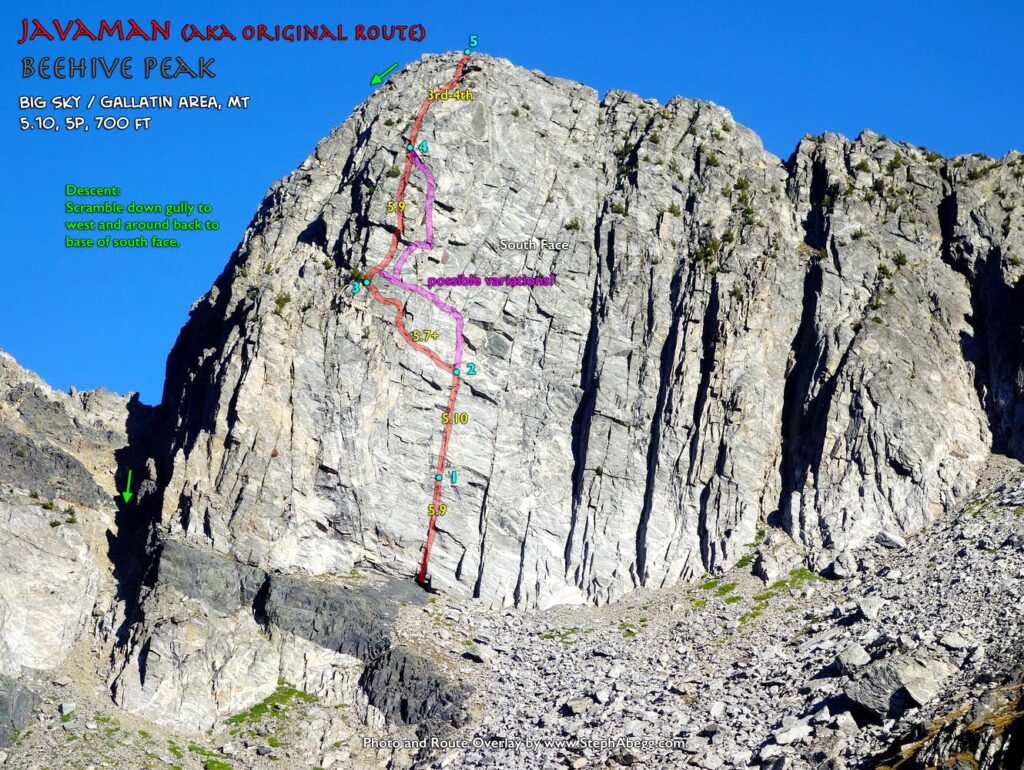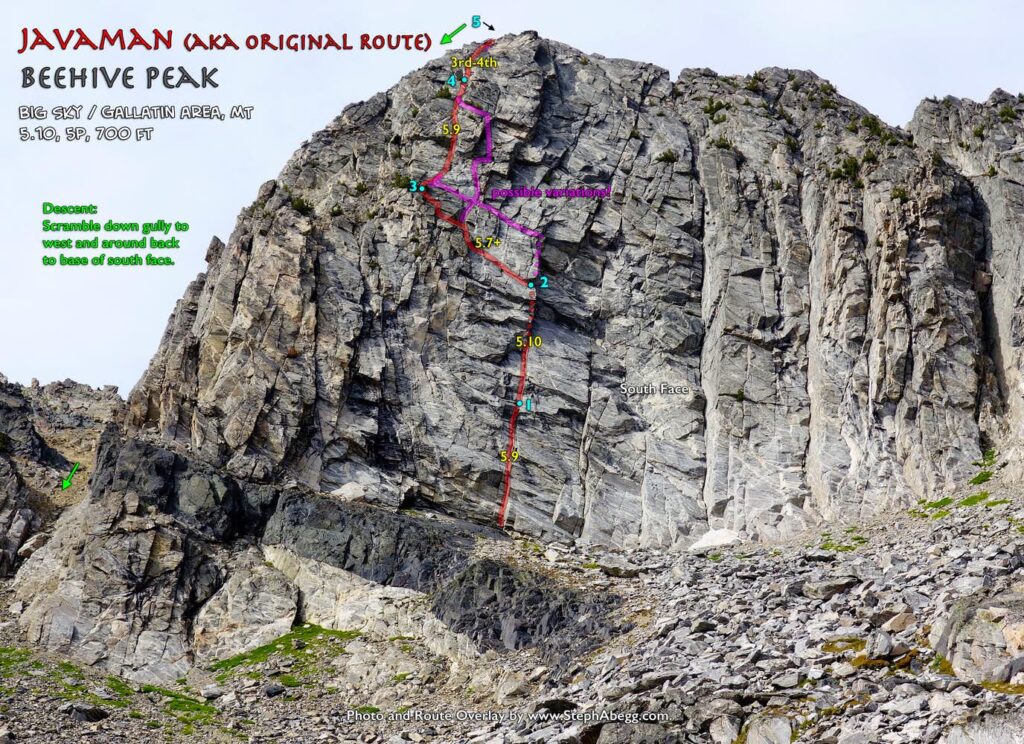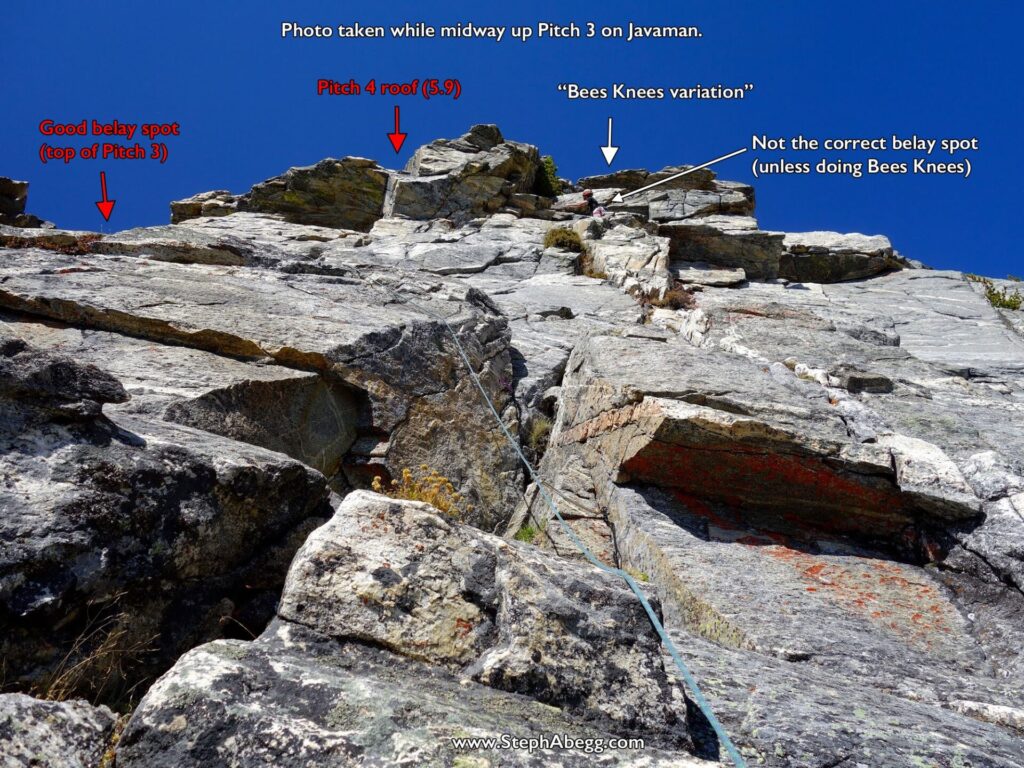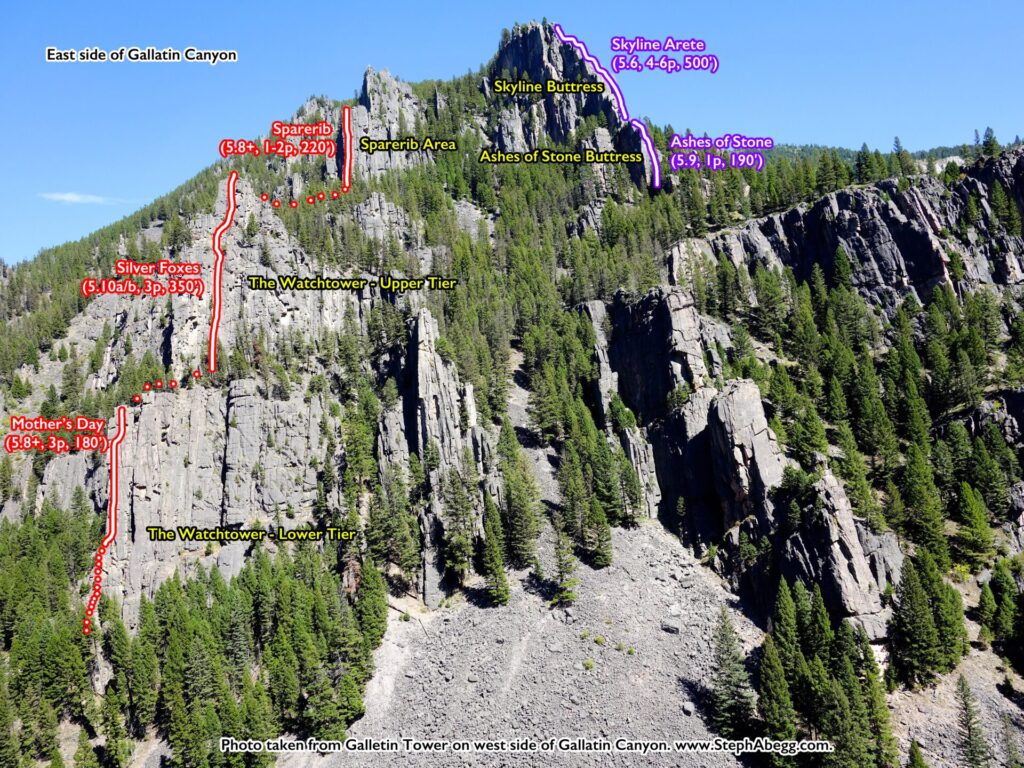In September 2018, I climbed in Montana for my first time. The original plan was a quick 4 days in
4 days in Blodgett Canyon, but I enjoyed these four days so much that I ended up extending my trip, turning the trip into a 2-week effort to climb as many classic routes in Montana as I could. I spent the last three days of my 2018 Montana adventures climbing in the Gallatin area, just south of Bozeman.
Two of these days (a Sunday and a Tuesday, Sept 9 and 11) were
afternoons/evenings of cragging in Gallatin Canyon, a mecca of roadside gneiss outcrops just south of Bozeman. I climbed here with Chad Hiatt. Chad had been my partner in Blodgett Canyon, and when I found myself in Bozeman a week later, he was able to free up a couple of afternoons for some after-work cragging (so Chad was my partner for about half of my Montana adventures—I had a blast climbing with him, a super solid climbing partner and a fun guy to hang out with). On our two afternoons/evenings in Gallatin Canyon, we climbed several classic moderate routes, on our second day linking up 8 pitches that brought us from the base of the canyon to near its top and enjoying sunset high above the canyon floor.
On the Monday between these two days of cragging in Gallatin Canyon, I squeezed in another Montana classic alpine climb: The 5-pitch 5.10 route
Javaman (aka Original Route) on Beehive Peak. Beehive Peak is a beautiful alpine area located just south of Gallatin Canyon, in the Gallatin National forest near the Big Sky Ski Resort. Despite the fact that it is alpine, the area has a very short approach. The rock is high quality alpine gneiss that is fun to climb, and the south face of Beehive has several multipitch routes as easy as 5.7 and as hard as 5.11. Javaman ascends the tallest part of the face; the route is known to be an accessible 5.10, with short cruxes and only one true section of 5.10 section on the second pitch. Javaman had been recommended to me by a local as a route I should climb during my extended trip (thanks for the tip Greg!). I climbed it with once-Washintonian-now-Bozeman-local Adam Sultan, who had responded to my Facebook partner post (thanks Adam for climbing this route with me and putting up with my desire for an early start so I could climb again the next day!). It was definitely a fun day out on gneiss rock.














































